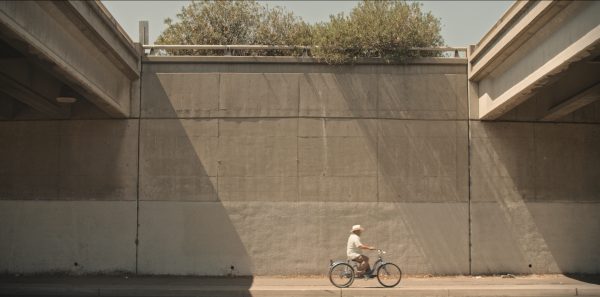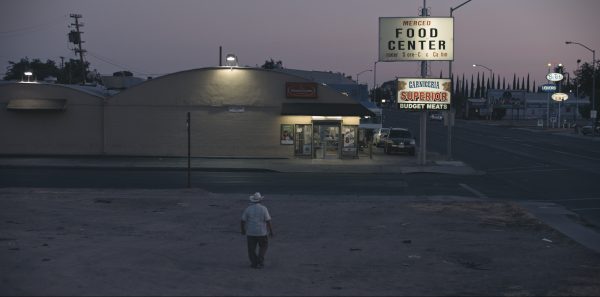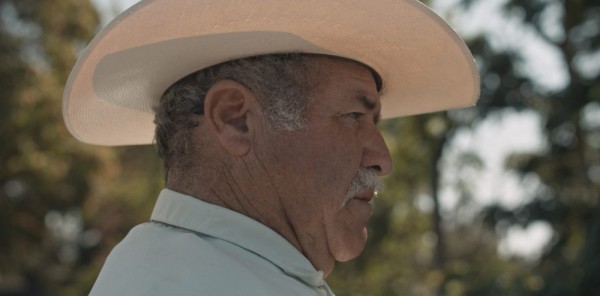I live in a forgotten region. Most Californians, if they know the Central Valley exists, forget it when they think of the state as a whole. Those that have been there often simply drive through it on their way to Yosemite. Very few actually visit this region. Perhaps the simple reason is that it offers up a direct contrast to the mythical California of sunlit beaches and sophisticated cities. The Valley has high levels of poverty, crime, and unemployment. Stretching for 450 miles, from Bakersfield to Redding, it is one of the most heavily farmed regions in the entire world, and as such it is also home to a huge population of farm workers, most of them of Mexican origin.
Growing up in this place, I often wondered if I could ever make a film here, and in the spring of 2014 I started working on a documentary about peach pickers. I wanted to capture the beauty of manual labor, the backbreaking intensity of fieldwork, and the folks who make it come alive, day after day, in the summer heat.
I was just beginning to work on this film, finding the orchards, looking for farmworkers to follow, when the project was transformed after I learned of a personal story within my own family. A cousin of mine, much older and wiser, perhaps trying to show me the possibilities I had ignored, told me that many years ago, my grandfather had disappeared for a span of five years. Back in those days, grandpa would leave his wife and children back in Michoacán to go to California, traversing thousands of miles to work the fields during harvest time. It was a cyclical journey, leaving in the spring and always coming home to Mexico for Christmas. But one year, grandpa did not return from California. Nobody knew where he was or what had become of him. As far as I know, even when he finally stepped through the door of his home and reunited with his family, he never really explained his absence to anyone.

My mind started to focus on the image of my grandfather coming home, as if he were a spirit coming back from the dead. I wondered what his life would have been like if he had stayed lost even longer. What if 10 or 20 years had gone by? What would his life have become if he were gone long enough to forget his family and his home? I realized that my grandfather was a ghost like many others. Even today, every city and town in California has ghosts. Every immigrant community has a man like my grandfather, who just disappeared across the border and became a lost soul. Their stories fall silently by the wayside, ignored and overlooked, perhaps because we are afraid of what they have to say about the great American Dream. Because of my grandfather, I knew I could no longer make a lyrical documentary. I had to find a way to tell the story of the man who did not come back.
Little by little, a story began to take shape. I brought in some of my research from the documentary, using the same peach orchards and many of the neighborhoods where I was scouting for talent. I wrote the script by trying to imagine the life of a single, Mexican man from the countryside who had worked the land his entire life. What did he do? What was his daily routine like? What was his greatest hope? I soon had an outline of a story about a man named Lupe who lived and worked in the Central Valley but felt like he let life pass him because he let his wife and children back in Mexico slip away from him. One day, Lupe comes to understand that he is dying, and now all he wants to do is return to Mexico one last time, no matter the cost.
In the meantime, one afternoon, my father introduced me to an old friend named Daniel Muratalla. He was a native of Michoacán and had worked for over 30 years as a field laborer, and he was absolutely perfect for the part as I imagined it: strong, charismatic, and with an intensity about him that could bring to life the conflicts of the character. We were both very shy at first, but soon enough we started talking about the film and the character I wanted him to portray. Danny did not know much about filmmaking, but he was intrigued by the idea because he knew a lot of men like Lupe, who ended up alone after a lifetime of work. At the same time, he felt intimidated by the prospect of acting on camera. I told him that he would not have to memorize lines like a professional actor would. We would take it one scene at a time, step by step. But I also told him that in order for this approach to work, he had to feel that he could trust me. Once we established that bond, Danny helped me to convince Ana, his, wife to play the role of Lupe’s girlfriend, Gloria, the only meaningful relationship the character has in the United States.

Our trust paid off during the filming itself, as I would often ask Danny and Ana for their take on dialogue or situations at hand. Many times, I simply adapted to the circumstances. When we filmed in their home we used all of their furniture and personal items as props, as well as their own normal wardrobe. I cast their children as extras in the film, and we incorporated their speech patterns into the dialogue. The result is that the film often steps into the world of documentary, capturing Lupe’s story with a sense of realism that is almost completely absent from how we look at the immigrant experience in this country.
For second-generation immigrants like myself, ghosts like Lupe present a special challenge. They are the painful side of our journey. These lost souls are the picture of loneliness and a deep, woeful anguish that comes from an acute awareness of not belonging on either side of the border. It is scary to look at them because there is always a possibility that we may see our own struggles reflecting back at us.
I felt this fear myself as I worked on this film. For a long time after I wrapped up the shoot, I was very angry with Lupe. I felt that he was incredibly selfish and I could not respect him. Only in the last months of finishing the film did I reconcile with him. One afternoon, I sat down and watched the film by myself and I finally understood that Lupe, and by extension my own grandfather, were men who lived with a limited set of resources. They did not know how to express their emotions. But they did the best they could to make things right. I finally could see Lupe as a man facing the supreme moment of truth. Nearing the end of his life, confronted by death, he finally comes to understand the price that he has paid for leaving it all behind. He rushes to make amends, against all odds, upturning his life once again, willing to do anything to go home and face his destiny.
As immigrants, we often want to look away from the struggles and pitfalls of our journeys. We want to highlight the successes, and understandably so. But we must also confront our fears and recognize that these ghosts are part of who we are. We must embrace the Lupes of this country if we want to truly make our communities whole.
Rodrigo Reyes’ film Purgatorio premiered at the L.A. Film Festival and has been shown around the world. He is a translator at the Merced Superior Court.
This essay is part of a Zócalo Inquiry into what makes a healthy neighborhood, produced in conjunction with the California Wellness Foundation’s Advancing Wellness Poll.
*All photos are stills from the film, Purgatorio/courtesy of the author.










